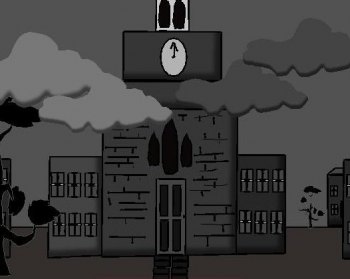
Among the sick: Alexander Hamilton, secretary of the treasury. Before the epidemic was over, an estimated 5,000 were dead. And out of a population of 45,000, approximately 17,000 had fled Philadelphia.
Washington had to make a difficult decision. Word came to him that “his presence in the city was one of the few things that gave inhabitants hope,” wrote James Thomas Flexner in the book, “Washington, The Indispensable Man” (Little, Brown & Company; 1969).
But Washington’s wife, Martha, said she wouldn’t leave Philadelphia without him. At the time, the couple was raising two grandchildren, Eleanor “Nelly” Parke Custis, 14, and George Washington “Washy” Parke Custis, 12.
In a letter to his personal secretary, Washington explained, “It was my wish to have stayed there longer; but as Mrs. Washington was unwilling to leave me amidst the malignant fever which prevailed, I could not think of hazarding her & the Children any longer by my remaining in the City—The house in which we lived being, in a manner blockaded by the disorder which was becoming every day more & more fatal. I therefore came off with them on the above day …”
And so Washington left for Mount Vernon, his home in Virginia. But while he was safe, the crisis in Philadelphia continued. It was a fully blown disaster in which respected medical practices of the day made matters worse:
Doctors knew people were getting sick – but they didn’t know how or why. The fever brings a "yellow tinge to the eyes and skin," according to the Harvard University Library’s Open Collections Program. It is also known for the "terrible 'black vomit'" caused by bleeding in the stomach. (For more on yellow fever, see the Centers for Disease Control and Prevention website.)
Some doctors thought the illness stemmed from unsanitary conditions. (Several generations and 100 years later, doctors would figure out that the virus is transmitted by the bite of an infected mosquito.)
A medical and political squabble: Doctors didn’t agree on how to treat the illness. Some thought patients would be helped by bloodletting -- cutting a vein and allowing the patient to bleed. Among the proponents of this method was Benjamin Rush, a medical doctor and signer of the Declaration of Independence. Along with bleeding patients, he would administer large quantities of mercury, according to Harvard. A silvery metallic element that is liquid at room temperature, mercury was then commonly used for several reasons, including as a purgative, according to The Bantam Medical Dictionary.
Hamilton recovered under the care of another doctor, Edward Stevens, who, along with several others, advocated milder therapies -- such as cool baths and teas. Hamilton subsequently published a letter to the College of Physicians attributing his recovery to his doctor’s skills.
As with everything involving government, this scientific difference was interpreted through the lens of politics. (For more, read these footnotes on the National Archives website.)
A bad idea: Doctors thought African-Americans couldn’t get the sickness. Given this inaccurate information, members of the Free African Society volunteered to help. Many died.
A rush to leave the city: Leaving sounded like a good idea, but Philadelphia residents were not met with open arms, recounts the PBS.org website, American Experience. Indeed, other cities established quarantine houses or set up roadblocks to keep the refugees out.
Related:
CDC announces plans to monitor travelers
4 reasons Ebola has been underestimated
Ebola: History's latest plague upon our houses